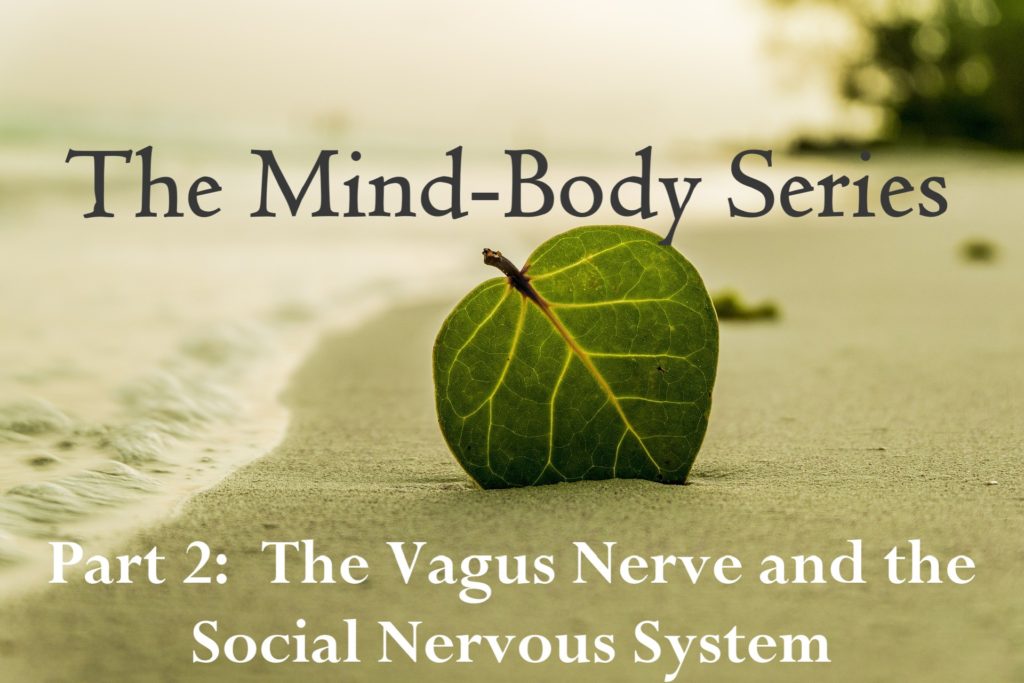Welcome to Part 2 of the Mind-Body Series! If you missed last week’s blog post about the Limbic System and the HPA-axis, you may read it here. In today’s post we will be discussing the role of the vagus nerve in overall well-being, the development and expression of empathy, and integrative mental health. Let’s first begin with a quick preview of the magnificent autonomic nervous system…
What is the autonomic nervous system?
The Autonomic Nervous System (ANS) is a specific part of our nervous system that regulates the involuntary function of our internal organs (i.e. heart, lungs, stomach, and intestines) and some of our muscles (especially reflexes).
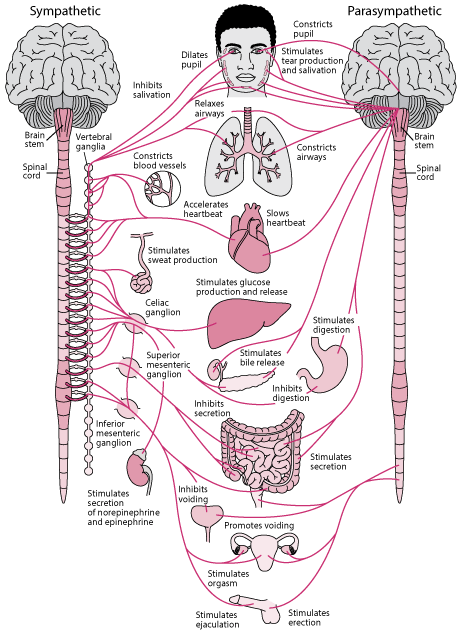
It is important during two situations:
- In emergencies or stressful events that cause us to “fight” or “flight” (run away)
- In non-emergencies that allow us to “rest” and “digest”
The ANS is divided into three parts:
- The sympathetic nervous system
- The parasympathetic nervous system
- The enteric nervous system
The sympathetic nervous system is a part of the “fight or flight” response discussed in Part 1 of the Mind-Body blog series. As discussed in Part 1, once a person’s brain has interpreted something as a threat, it signals a cascade of hormonal responses that activate the release of cortisol to prepare the body to either fight or run away. As cortisol is released, your sympathetic nervous system also releases neurotransmitters and neurohormones that signal certain internal organs to decrease their activity while increasing the activity of others. For example, during times of acute stress, your body will automatically shut down your digestive organs while increasing your heart rate, blood pressure, breathing rate, and sweat production.
The parasympathetic nervous system is a mechanism that allows the body to relax, digest, and save energy. During these times, your body will decrease your heart rate, blood pressure, breathing rate and sweat production while allowing your digestive organs to function optimally. One major component of this particular mechanism is the tenth cranial nerve, also known as the vagus nerve. We will discuss this in a bit.
Lastly, the enteric nervous system is a vast network of nerve fibers within particular visceral organs, such as, the digestive tract, the pancreas, and the gallbladder that communicate directly with the brain. Although it is located in the gut, it uses the same cells and chemicals as the brain to help us digest, and to alert the brain when something is out of balance. When our brain health is compromised, it directly impacts gut health. When our gut health is compromised, it directly impacts brain health. Hence, why it is now being referred to as our “second brain”. I will discuss this in more depth in next week’s blog post.
What is the vagus nerve?
The vagus nerve is a very large nerve that is a crucial component of the parasympathetic nervous system. It connects the brain to major organ systems, including the stomach, liver, gallbladder, pancreas, intestines, heart, lungs, throat, larynx, and facial muscles. A healthy vagus nerve supports your digestive system, helps to regulate your sleep patterns, and calms down your nerves.
What is the social nervous system?
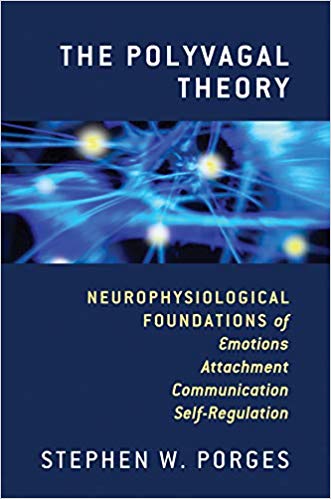
Dr. Stephen Porges, author of “The Polyvagal Theory”, proposes that the autonomic nervous system has three functions: social communication, defensive mobilization, and defensive immobilization. He also theorizes that getting stuck in defensive mobilization due to disrupted early attachment history and/or traumatic experiences can contribute to a host of physical and mental disturbances – anxiety, depression, chronic PTSD, autism, insomnia, personality disorders, GERD, IBS, IBD, psychosomatic pain, high blood pressure, heart disease, chronic constipation, bladder issues, chronic UTIs, pain during intercourse, etc. (Read more about Dr. Porges and the Polyvagal Theory here)
The social nervous system is responsible for both the expressive and receptive aspects of verbal communication. It guides the rhythm and tone of our speech and helps provide meaning to our communication. It also guides our ability to listen to others by allowing you to pick up on emotional nuances between communication. Considering that the vagus nerve connects the heart to your facial muscles, it is likely to encourage empathy in normal individuals. Just think about it, when you see or hear something touching, you automatically feel it in your heart. You may even instinctively place your hand over your heart as a display of endearment.
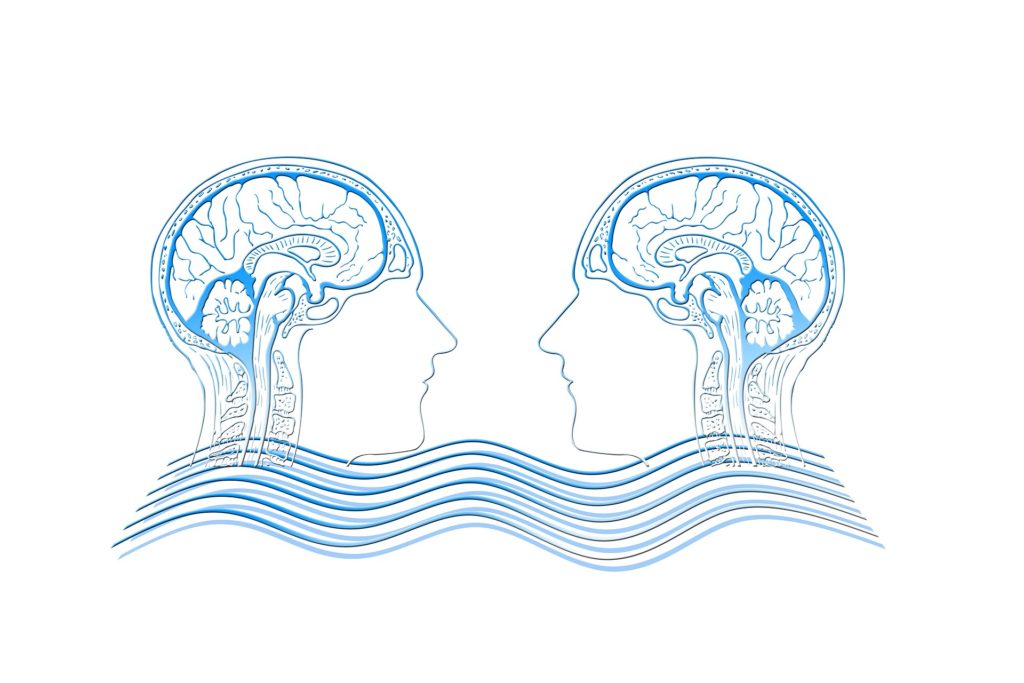
As babies, facial expressions and crying are our only ways of communicating our needs with our parents/caregivers. The acts of crying, fussing, and smiling are extremely essential for our survival. When a baby’s needs are not met adequately by caregivers, the child will experience stress, and become unable to develop fully and self-regulate. The stress will cause a surge in cortisol, which can blunt psychological and emotional development and cause him or her to become avoidant, avoid eye contact, and withdraw from human contact. This inability to show emotion will persist well into childhood, adolescence, and adulthood causing a host of mental health issues, such as, anxiety, and placing him or her at an increased risk of heart disease.
Another important part of proper development of the social nervous system is the ability to feel empathy. Empathy is the basis of all human bonds and it provides a sense of connection and belonging with the greater community and environment. A child with an undeveloped social nervous system may grow up to be isolated and depressed, or aggressive. On the extreme end, it can lead to psychological issues, such as malignant narcissism, borderline personality disorder, and sociopathy. An impaired social nervous system, such as in cases of chronic and/or severe trauma, can cause an inability to discern safety from a threat, as well as, an inability to tune into our own feelings, inhibiting us from feeling pleasure or pain.
Heart-Rate Variability
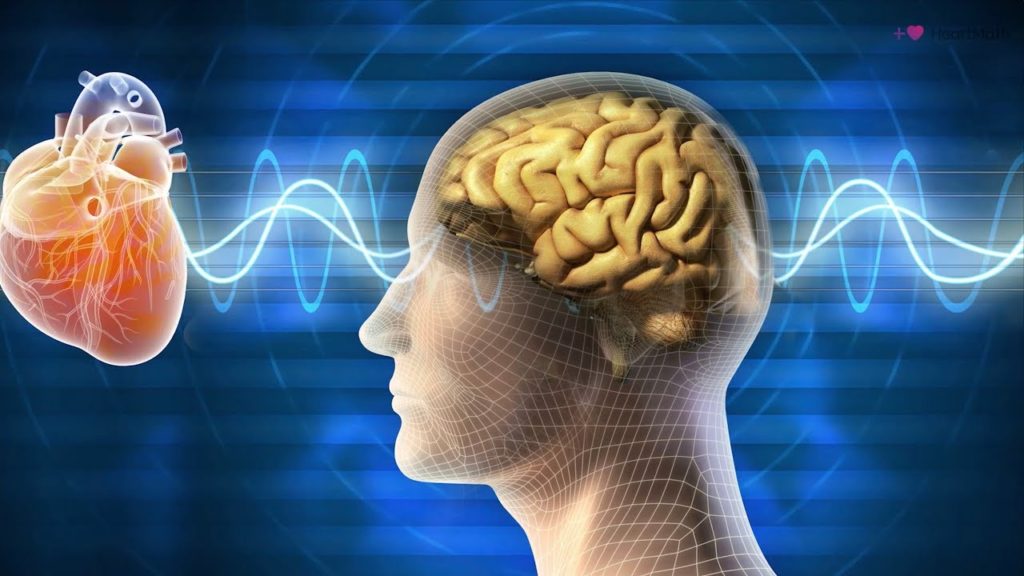
Learning to regulate vagal tone is associated with reduced inflammation, leading to better support and prognosis for chronic illness, migraines, auto-immune disorders, anxiety, depression, PTSD, and other trauma or stress-related disorders. Mind-body therapies can help regulate vagal tone by engaging your social nervous system. Engaging your social nervous system can help increase your resilience by helping you to feel safe, calm, and collected – even during times of stress.
How do we measure vagal tone?
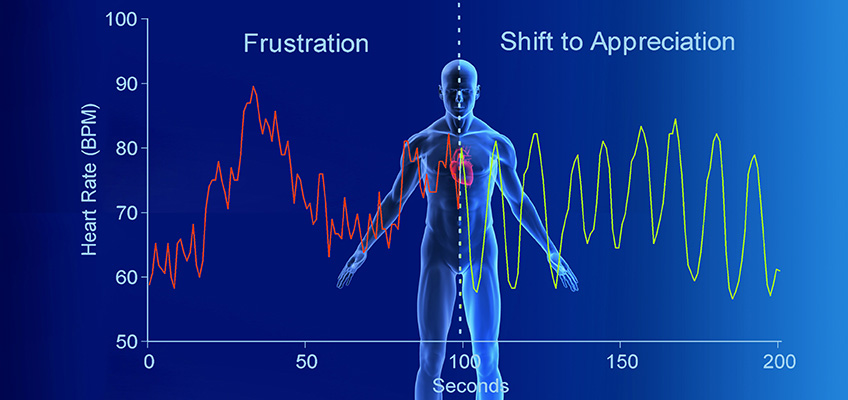
The only way to measure vagal tone is through heart rate variability, commonly referred to as HRV biofeedback. HRV biofeedback measures oscillations in heart rate that occur with each breath. A healthy vagal tone involves a slight increase in heart rate during inhalation and a decrease in heart rate during exhalation. It can be thought of as a healthy balance between the sympathetic and parasympathetic nervous responses. Those with higher heart-rate variability can move more easily from an excited state to a relaxed state and can recover more easily from stress.
What are ways I can regulate my vagal tone?

In order to restore proper vagal tone, I recommend the following options to my patients:
- Deep Breathing Exercises
- Seated Meditation
- Walking Meditation
- Simply sitting or walking in nature (placing your bare feet on the ground is even better!)
- Sleep Meditation
- Alternate Nostril Breathing
- Heart-Rate Variability Biofeedback Therapy
- Craniosacral Therapy
- and more
The goal of each recommendation is to first allow you to simultaneously tune into your body sensations, your breath, your emotions, and your thoughts. Most importantly, by doing so, it helps you develop your capacity to feel safe, peaceful, calm, and collected. Once that is achieved, by blending social engagement with mobilization and immobilization, you can slowly begin to build your tolerance for sympathetic activation. As a result, over time, your capacity to move in and out of different nervous system states is restored.
My services will be available beginning this October at The Center: A Place of Hope in Washington, which is an in-patient treatment facility for trauma, various mental illnesses, eating disorders, and addictions. For more information about the services I will be offering, or how to arrange accommodations at The Center, you may contact me through my website’s Contact Page (click here).
Be sure to like and follow my facebook page and/or my instagram page to stay updated for next week’s Part 2 of the Mind-Body Series, “The Gut-Brain Connection”, where I will be discussing the role of the vagus nerve, the “second brain” (our enteric nervous system), and the gut microbiome in emotional, mental, and physical health.
Until next time,
Dr. Richmond
Remaining Posts of the 5-Part Mind-Body Series:
- The Gut-Brain Connection (Next Week)
- The Green Mind Theory
- The Neurobiology of Spirituality
References:
- https://www.stephenporges.com/
- https://www.merckmanuals.com/home/brain,-spinal-cord,-and-nerve-disorders/autonomic-nervous-system-disorders/overview-of-the-autonomic-nervous-system [Photo]
- https://www.heartmath.org/science/ [Photo]
- https://www.heartmath.org/articles-of-the-heart/science-of-the-heart/article-explains-importance-of-heart-rate-variability-for-your-health/ [Photo]
